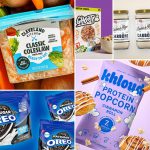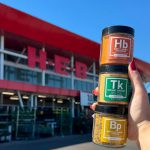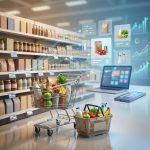IRI: CPG Sales Rise in 2021; Unilever, Hershey Among Top Brands

The total U.S. CPG industry grew 2.7% to $962 billion in 2021 as pandemic-related shifts in consumer behavior and routes to market began to cement themselves, according to the latest CPG Growth Leaders report by market research firm IRI.
The 52-week sales growth reflected an anticipated slowdown from 2020, when sharp spikes in retail sales amid the onset of the pandemic led to “explosive” 10.6% growth, but the decline was not as significant as analysts expected. A 5% rise in price / mix offset a 2.2% decline in volume sales year-over-year, across all CPG sectors including food, beverage, beauty and wellness products.
In a notable shift from past trends, large and small CPG brands gained share at the expense of mid-sized companies. Large CPG companies (over $6 billion revenue) increased their market share from 45.7% to 45.9%, the first time in five years large brands have gained share, according to Kishnakumar “KK” Davey, president of client engagement for IRI, in a webinar today. Meanwhile, medium brands ($1-$6 billion) reported a 0.1 point drop in share to 17.3% and small brands ($100 million to $1 billion) grew share by 0.3 points to 12.7%.
Share of extra small brands (under $100 million in revenue) remained flat at 8.6%, while private label products declined, down 0.4 points to 15.5% share.
Among top performing brands, Red Bull was the highest growing large CPG brand, up 20.1%, followed by Procter & Gamble, Constellation Brands, Unilever, and Hershey. Meanwhile, sports drink BodyArmor, which was acquired by The Coca-Cola Company late last year, topped the list for mid-sized brands with 51.9% sales growth driven by pre-acquisition volume and distribution gains. Among small brands, energy drink producer Alani Nutrition was the top grower, reporting $125 million in sales, followed by companies including Impossible Foods, Goli Nutrition, CELSIUS and Upfield.
According to Aman Gupta, managing director and partner at Boston Consulting Group, many previously flat CPG categories that benefitted from pantry loading in 2020 (paper products, drink mixes, and shelf stable breakfast items among others) saw sales revert to pre-pandemic levels in 2021. Meanwhile, “self care” and other wellness products remained elevated as consumers continued to focus on their health, with products like Unilever’s hydration mix Liquid I.V. and better-for-you energy drinks like CELSIUS seeing significant growth.
Tech-based platform and channel disruptions that were accelerated by the pandemic also emerged as some of the strongest drivers for top performing companies, Gupta said. Companies that managed to stabilize their supply chains amid the ongoing challenges with shipping and costs also performed better.
“Leading companies have continued to invest across platforms, including in store pickup, first and third party delivery and shipment,” Gupta said. “They’re all becoming increasingly important.”
The lasting impact of these new tech-driven strategies was reiterated in a panel discussion during the webinar, which featured CPG leaders including Michael Del Pozzo, SVP Sales and chief customer offer for PepsiCo Foods North America; Gary Osifchin, CMO and GM of U.S. Hygiene for Reckitt; and Jostein Solheim, Global EVP of health and wellness for Unilever.
“These are major shifts that you haven’t seen in CPG 20 years,” Osifchin said, reflecting on the rise of ecommerce. “I feel like this isn’t about print magazines going away, and I used to work at People Magazine,this is about shifts – true shifts – that are going to stick with us. And we need to be there for consumers and shoppers.”
Solheim said companies need to “go vertical” to thrive in a new market that demands more customer engagement crafted around community.
“Customers now have a community … and you’re connecting your community, their community and your personalized journey together for that shopper. And it’s a high precision level, and it’s highly personalized. So the winner is going to be the players who go vertical [and] really stack, from the shop to delivery, the instant, the online, if you can really optimize and deliver on that vertical axis and deliver that experience to each consumer … that is going to be the winner, versus going broad and big scale.”
Del Pozzo said 83% of consumers now say they want a personalized experience and can also be more demanding when it comes to having products in stock and widely available as increased competition will drive shoppers to other brands that have products in stock and are conveniently accessible.
As well, Del Pozzo said 91% of online shoppers said they will continue to buy groceries online post-pandemic, vastly exceeding early expectations for a return to in-person shopping habits. He noted that PepsiCo’s ecommerce business roughly doubled last year and said the company is continuing to focus on growing its online sales business.
Retailers are also increasingly focused on reaching consumers at home, striking partnerships with ecommerce delivery platforms to drive business, Del Pozzo said. As major retail chains see foot traffic return, they are beginning to “really battle for space” among in-store shoppers whose purchases are even more divided than ever between brick-and-mortar and online stores.
“I think it’s always centered around the ecosystem expansion,” Del Pozzo said. “We think retailers are going to continue to form these new partnerships. I don’t think a day goes by we don’t see another example of the Kroger/Instacart [partnership] … So I think this ecosystem expansion is going to really put pressure on the way traditional views of the channels were evaluated.”
















